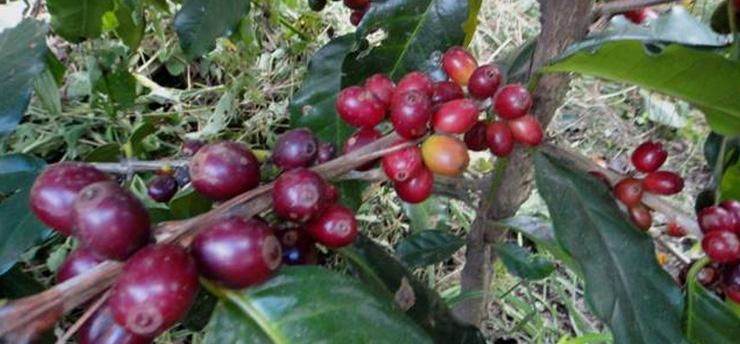
Each day, more beans arrive at the co-op for processing. Just 24 hours prior to arriving they were still inside ripe coffee cherries hanging on the tree, and by now the cherries have been hand-picked, washed and de-pulped to expose the coffee beans. These “wet beans” are then collected and brought down to the co-op as quickly as possible.
Care and speed matter. Both are essential to safeguard the quality of the beans.
And they deserve this care. They are high-quality beans with characteristics shaped by their variety and how they’re grown. These factors overlap, but each makes its own contribution as well.
Arabica: All these beans come from Coffea Arabica trees, the species that produces almost all of the world’s specialty (highest ranked) coffee. Arabica is more challenging to grow than the other more common species, Coffee Robusta (“robust”), but it offers a sweeter, more intense flavour. All of this connects to location as well, which we’ll get to.
High-Altitude: Co-op members’ farms lie 1100-1600 metres above sea level; an elevation which provides the natural growing conditions Arabicas like best. Insects and disease are less prevalent at these altitudes, helping to protect the delicate Arabica trees from problems to which they are more vulnerable than their low-altitude cousin, the Robusta. Also — much valued by consumers — the cooler temperatures and longer growing season produce a harder, denser bean, with more concentrated sugars. The result is the sweeter, more intense flavour of Arabica coffee.
Organic: No chemicals, ever. Chemicals are designed to feed plant roots, period. They do nothing to feed the soil, build soil structure, or help prevent eventual soil sterility. Organic fertilizers — such as the coffee cherry pulp used by co-op members — feed the soil, which then feeds the trees. Co-op members also grow their trees using the Integrated Open Canopy method, which creates the dappled sun/shade combination that helps prevent mould and disease. Result: enhanced biodiversity, healthy soil with good structure, healthy trees, and healthy beans.
Single-source: As with quality wines, so with quality coffee. When the fruit comes from one specific location, or geographic area, it is dependably rich in the characteristics of that region. The beans that arrive at Cooperativa COMISUYL may come from some 250 family coffee farms, but all those farms lie within a single “eco-area”. All the beans share the advantages of that area’s high altitude, rich soil, average temperature, cloud and mist frequency, and wet and dry season cycles. Very soon, these beans — 645 kilos (1400 lbs) at a time — will spend 24 hours in the co-op’s dryer. It is more efficient than conventional dryers, and it is the only one in the world that runs entirely on green energy, a combination of solar panels and biomass. But first, before becoming part of a dryer batch, the beans are carefully recorded in the co-op books. Each farm receives full credit for its own output.
- Keep checking this page: we will be writing more, step by step, about the process that brings Cafe
- Solar from the mountains of Honduras to your coffee cup.
- Next Week: Coffee Intake with Good Record-Keeping</li>
- And mark your calendar: the 2014-15 harvest will be available this May!

